Butterflies and Moths
Media

Species Types
Scientific Name
Nymphalis antiopa
Description
The unmistakable mourning cloak is a familiar woodland butterfly in Missouri. Adults hibernate and are sometimes seen flying on warm, sunny days in winter.
Media
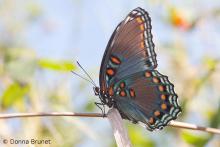
Species Types
Scientific Name
Limenitis arthemis
Description
The red-spotted purple is a stunning butterfly, even though the spots are really orange, not red, and blue is more prominent than the subtle violet hues.
Media

Species Types
Scientific Name
Speyeria idalia
Description
The regal fritillary is a large, silver-spotted, orange and blackish-gray butterfly of our native tallgrass prairies. Because of its dwindling habitat and steeply declining numbers, it is a species of conservation concern in Missouri and nationally.
Media
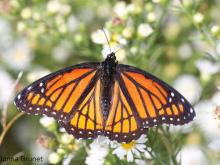
Species Types
Scientific Name
Limenitis archippus
Description
Viceroys and monarchs look very similar. Both use the same warning coloration to warn would-be predators: We are toxic!
Media
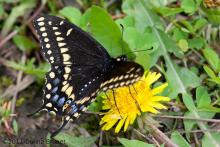
Species Types
Scientific Name
Papilio polyxenes
Description
Most gardeners meet the black swallowtail sooner or later, because parsley, carrot, fennel, and dill are favorite food plants of the caterpillars.
Media

Species Types
Scientific Name
Papilio glaucus
Description
The beautiful eastern tiger swallowtail ranges across Missouri and is equally at home in forests or in city landscapes.
Media
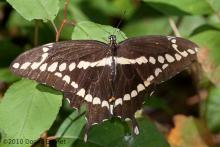
Species Types
Scientific Name
Papilio cresphontes
Description
The giant swallowtail is the largest butterfly in our state. In Florida, the caterpillars are a pest in citrus orchards, but here in Missouri, they feed primarily on prickly ash and hop tree, plants provided by nature.
Media
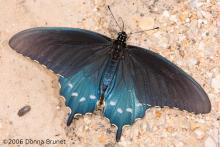
Species Types
Scientific Name
Battus philenor
Description
The pipevine swallowtail is ignored by most predators because of its acrid body juices. Several other butterflies benefit by looking strikingly similar.
Media

Species Types
Scientific Name
Pterourus troilus
Description
Spicebush swallowtails are beautiful large black butterflies with beautiful iridescent blue-green on the hindwings. The caterpillars eat the leaves of sassafras and spicebush.
Media

Species Types
Scientific Name
More than 700 species in North America north of Mexico
Description
Learn about butterflies and skippers as a group. What makes a butterfly a butterfly? How are they different from moths? What are the major groups of butterflies?
See Also


Media

Species Types
Scientific Name
About 1,500 species in North America north of Mexico
Description
Adult caddisflies are mothlike. Their larvae are aquatic and build portable, protective cases out of local materials, including grains of sand, bits of leaves and twigs, and other debris.
Media

Species Types
Scientific Name
Corydalus cornutus
Description
Adult eastern dobsonflies are huge and mothlike, with large wings and a weak, fluttery flight. The fiercely predaceous aquatic larvae, called hellgrammites, are well-known to anglers, who often use them as bait.
About Butterflies and Moths in Missouri
Butterflies, skippers, and moths belong to an insect order called the Lepidoptera — the "scale-winged" insects. These living jewels have tiny, overlapping scales that cover their wings like shingles. The scales, whether muted or colorful, seem dusty if they rub off on your fingers. Many butterflies and moths are associated with particular types of food plants, which their caterpillars must eat in order to survive.





















